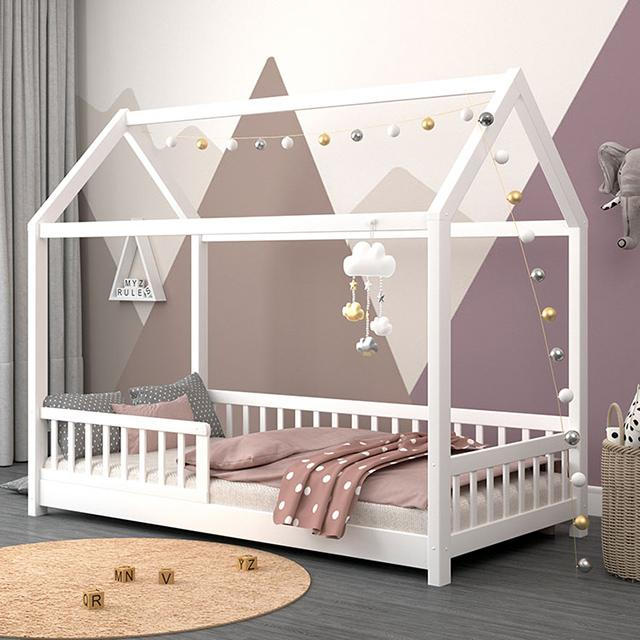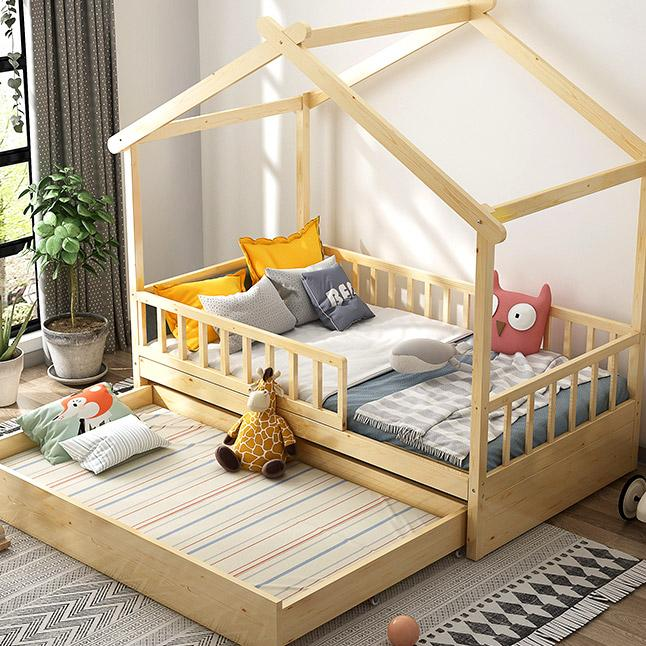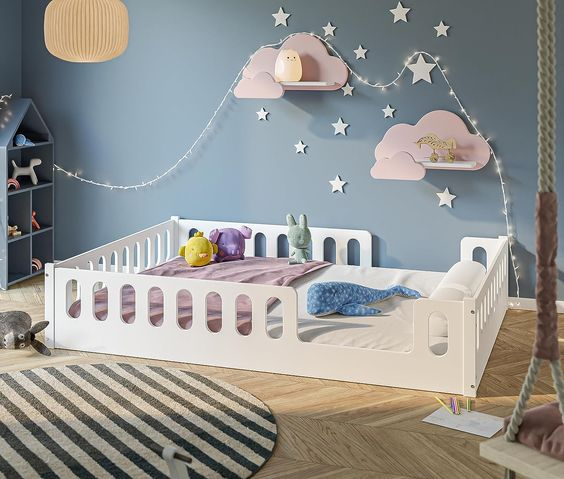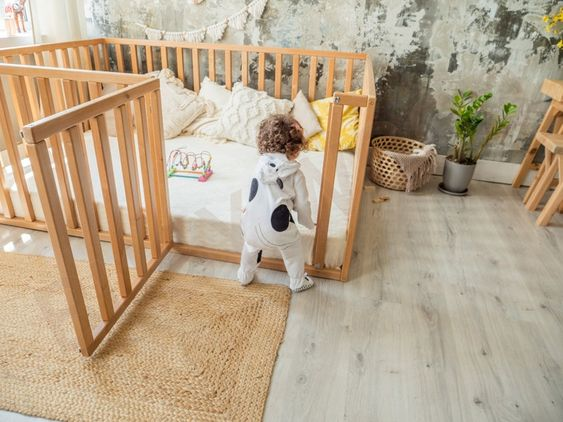
# Introduction to Montessori philosophy
The Montessori philosophy, developed by Dr. Maria Montessori, emphasizes the importance of providing an environment that fosters independence and self-directed learning for children. This approach extends to all aspects of a child's life, including sleep. Creating a conducive sleep environment is vital for toddlers and preschoolers, as it promotes healthy sleep habits and supports their overall development.
The importance of a conducive sleep environment for toddlers and preschoolers
A conducive sleep environment plays a crucial role in the physical, cognitive, and emotional well-being of toddlers and preschoolers. A well-designed sleep space promotes relaxation, comfort, and a sense of security, which are essential for quality sleep. When children have a peaceful and inviting sleep environment, they are more likely to fall asleep faster, sleep more soundly, and wake up refreshed.
What is a Montessori bed?
A Montessori bed is a low-to-the-ground bed that allows children to independently access their sleep space. It is designed to provide freedom of movement and encourage self-sufficiency. Unlike traditional cribs, Montessori beds do not have high sides or restrictive barriers. Instead, they offer an open and inviting space for children to come and go as they please.
Benefits of using a Montessori bed
-
Promotes independence: A Montessori bed empowers children to take charge of their sleep routine. They can get in and out of bed without assistance, fostering a sense of autonomy.
-
Encourages self-regulation: With a Montessori bed, children have the freedom to listen to their bodies and decide when they are ready to sleep or wake up. This helps them develop self-regulation skills and a healthy sleep-wake cycle.
-
Facilitates movement and exploration: Montessori beds allow children to move freely, promoting physical activity and exploration. They can easily access their sleep space, enhancing their gross motor skills and spatial awareness.
-
Creates a sense of ownership: Having their own sleep space gives children a sense of ownership and responsibility. They can personalize their bed with their favorite toys, blankets, or pillows, fostering a sense of comfort and security.
-
Supports cognitive development: Montessori beds provide an environment where children can engage in imaginative play and independent thinking. They can use their bed as a reading nook, a creative space, or a quiet area for reflection, stimulating their cognitive abilities.

Different styles of Montessori beds
Montessori beds come in various styles, allowing parents to choose the one that best suits their child's needs and preferences. Here are some popular options:
-
House bed: Resembling a miniature house, this style of Montessori bed adds a touch of whimsy to the sleep space. It provides an enclosed yet open area for children to sleep and play.

-
Floor bed: A simple and minimalistic design, the floor bed sits directly on the floor without any additional frame. It offers a low-profile sleep surface, making it easy for children to get in and out of bed independently.

-
Low-profile bed: This style features a low bed frame with no headboard or footboard. It provides a safe and accessible sleep space while maintaining a more traditional aesthetic.

-
Convertible bed: A convertible Montessori bed grows with your child. It can be transformed from a crib-like setup to a toddler bed and eventually into a regular-sized bed. This versatility makes it a long-term investment for your child's sleep needs.

Montessori bed vs. traditional crib
While traditional cribs have been a popular choice for many parents, Montessori beds offer unique advantages. Here's how a Montessori bed differs from a traditional crib:
-
Freedom of movement: Montessori beds allow children to move in and out of bed independently, promoting a sense of freedom and encouraging physical activity. Traditional cribs, with their high sides, restrict a child's movement and may hinder their development.
-
Encourages autonomy: Montessori beds empower children to take responsibility for their sleep routine. They can decide when to go to sleep or wake up, fostering independence and self-regulation. Traditional cribs often require parental assistance for entry and exit.
-
Promotes cognitive development: Montessori beds provide an environment for imaginative play and independent thinking. Children can use their bed as a creative space, enhancing their cognitive abilities. Traditional cribs offer limited space for exploration and imaginative play.
-
Longevity: Montessori beds can be used as a long-term sleep solution, growing with your child. They can transition from a crib-like setup to a toddler bed and beyond. Traditional cribs have a limited lifespan and need to be replaced as the child outgrows them.
How to set up a Montessori bed in your child's room
Setting up a Montessori bed in your child's room involves creating a safe and inviting sleep environment. Here are some steps to follow:
-
Choose the right bed: Select a Montessori bed style that suits your child's age, size, and preferences. Consider factors such as safety, durability, and ease of access.
-
Position the bed: Place the bed in a quiet and peaceful area of the room, away from distractions and excessive noise. Ensure there is enough space around the bed for easy movement.
-
Create a cozy sleep space: Use soft and comfortable bedding that provides warmth and comfort. Opt for natural materials like cotton or bamboo for breathability. Avoid using pillows, blankets, or toys that can pose suffocation hazards.
-
Personalize the bed: Allow your child to personalize their sleep space with their favorite stuffed animals, books, or a nightlight. This helps create a sense of ownership and security.
-
Ensure safety precautions: Install bed rails if necessary to prevent falls during sleep. Keep the sleep space clear of any sharp or hazardous objects. Secure the bed to the wall or floor to prevent tipping.
Safety considerations for Montessori beds
While Montessori beds offer numerous benefits, it is essential to prioritize safety. Here are some safety considerations to keep in mind:
-
Age appropriateness: Ensure that your child is developmentally ready for a Montessori bed. Younger children may still require the safety and containment of a traditional crib
-
Secure the bed: Make sure the bed is sturdy and properly anchored to the wall or floor to prevent tipping or collapse.
-
Remove hazards: Keep the sleep space clear of any sharp objects, cords, or small toys that can pose choking hazards.
-
Use bed rails: If your child is prone to rolling out of bed, consider using bed rails to prevent falls during sleep.
-
Supervision: While Montessori beds promote independence, it is crucial to supervise your child during the transition period to ensure their safety and well-being.
Conclusion
The Montessori bed offers a unique and beneficial sleep solution for toddlers and preschoolers. By embracing the Montessori philosophy and creating a conducive sleep environment, parents can foster independence, self-regulation, and cognitive development in their children. Whether choosing a ready-made Montessori bed or opting for a DIY project, the benefits of this sleep space extend far beyond a good night's rest. So, take the leap and redefine your child's sleep experience with a Montessori bed.